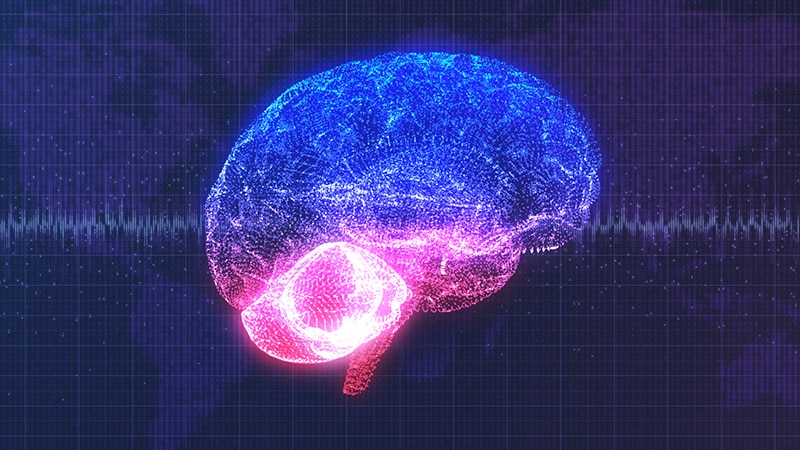The difference between a stroke patient’s brain age and chronologic age may help clinicians predict which patients are likely to have worse outcomes, a new study found.
Stroke patients with a higher relative brain age (RBA), as measured by MRI, had significantly worse functional outcomes after an ischemic stroke than patients with a lower RBA.
Although more work is needed, researchers say using open source radiomics software to extract features from MRI scans could allow clinicians to better target post-stroke therapy.

Dr Martin Bretzner
“Patients with older-looking brains were less likely to achieve good functional outcomes after stroke,” investigator Martin Bretzner, MD, a research fellow in neurology at Harvard Medical School and an interventional neuroradiologist at the Lille University Hospital, told Medscape Medical News. “Maybe we could use relative brain age to select patients to be more aggressive or more attentive with therapy.”
The findings were presented today at the European Stroke Organisation Conference (ESOC) 2022 Annual Meeting in Lyon, France.
Finding the Brain Age Gap
The gap between a person’s chronologic age and their brain age has been implicated in earlier studies as a biomarker for risk of dementia, schizophrenia, Alzheimer’s disease, and other conditions.
Bretzner and colleagues wanted to know if that brain age gap was also a predictor for outcomes following a stroke.
“Time passes at the same speed for everyone but we all age differently, with some people aging faster than others,” Bretzner said. “Relative brain age is just a way to apply that to neuroscience and brain imaging and to stroke patients in this study.”
Researchers used an open-source radiomics program to analyze T2-FLAIR MRI images captured within 24-48 hours of a stroke in 4163 patients (mean age, 62.8 years). They estimated each patient’s age based on those brain images, then compared the RBA figure to a patient’s actual chronological age.
Most patients’ RBA was either higher or lower than their actual age, with very few cases matching RBA and chronological age exactly. They then measured prevalence of stroke risk factors such as diabetes, hypertension, and a history of prior stroke to see if there were differences in patients with a higher brain age.
Having had a prior stroke was the most influential clinical factor affecting RBA (P < .001), followed by diabetes (P = .003), hypertension (P = .021), and smoking (P = .024).
When they examined the patients with the poorest post-stroke functional outcomes, they found that those with a higher RBA fared far worse than those with a lower brain age. In fact, RBA was the most significant determinant in poor outcomes (adjusted odds ratio [aOR], 0.76; P < .001), followed by age, prior stroke, and National Institutes of Health Stroke Scale (NIHSS) score.
“When you’re trying to predict post-stroke outcomes, you usually end up having age and NIHSS as factors and everything else just falls off the board,” Bretzner said. “But we saw that RBA was a factor strong enough to be as predictive of stroke outcome as age and NIHSS.”
More Work Remains
Commenting on the study for Medscape Medical News, Lee Schwamm, MD, volunteer chair of the American Stroke Association Advisory Committee and chair in Vascular Neurology at Massachusetts General Hospital in Boston, said the study offers intriguing possibilities for patient care, but many questions remain.
“What is most useful from my perspective is that the method is reliable and quantifiable, and so can be used to characterize accumulated risk for patients at any age,” Schwamm said.
“It will be important to understand how much manual work is required to measure the RBA, and if it can be automated and reported as a standard element in imaging interpretation,” Schwamm added. “Until it can be at least semi-automated and has high reproducibility, low error rates and high inter-rater reliability, it will remain a predominantly research tool.”
The study was funded by ISITE-ULNE foundation, Mass General Brigham hospital, the French Society of Neuroradiology, the French Society of Radiology, and the Thérèse and René Planiol foundation. Bretzner and Schwamm have disclosed no relevant financial relationships.
European Stroke Organisation Conference (ESOC) 2022 Annual Meeting: Abstract 312. Presented May 5, 2022.
For more Medscape Neurology news, join us on Facebook and Twitter
